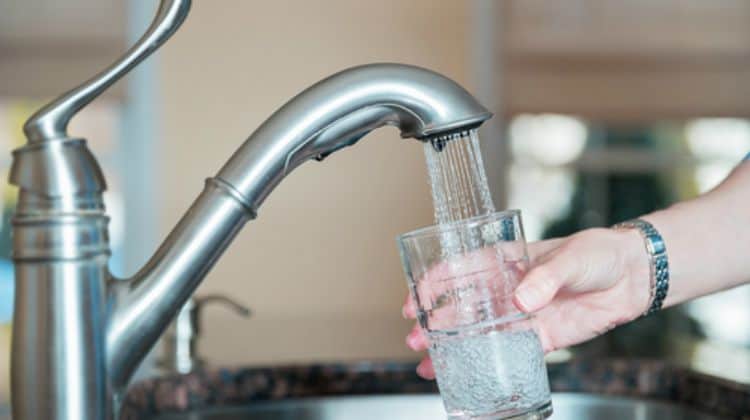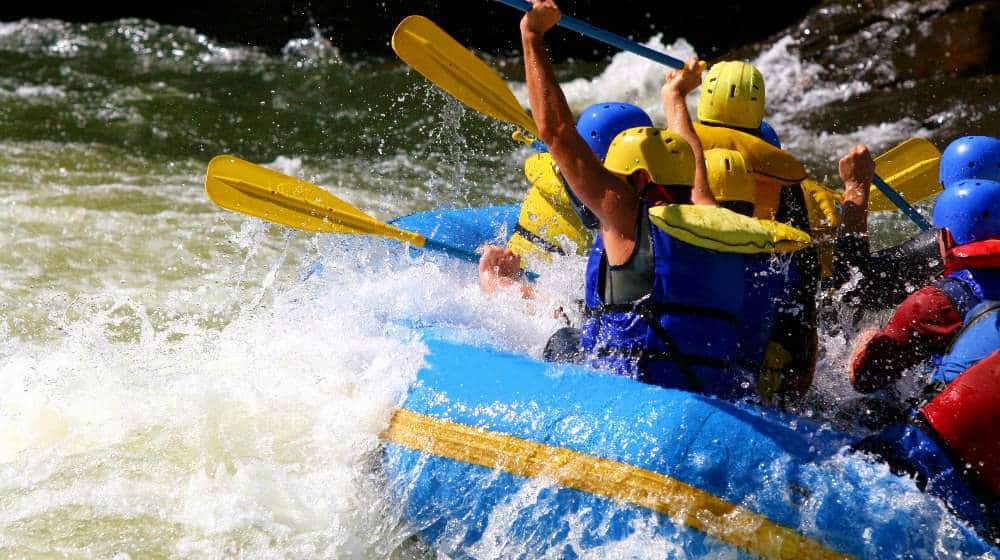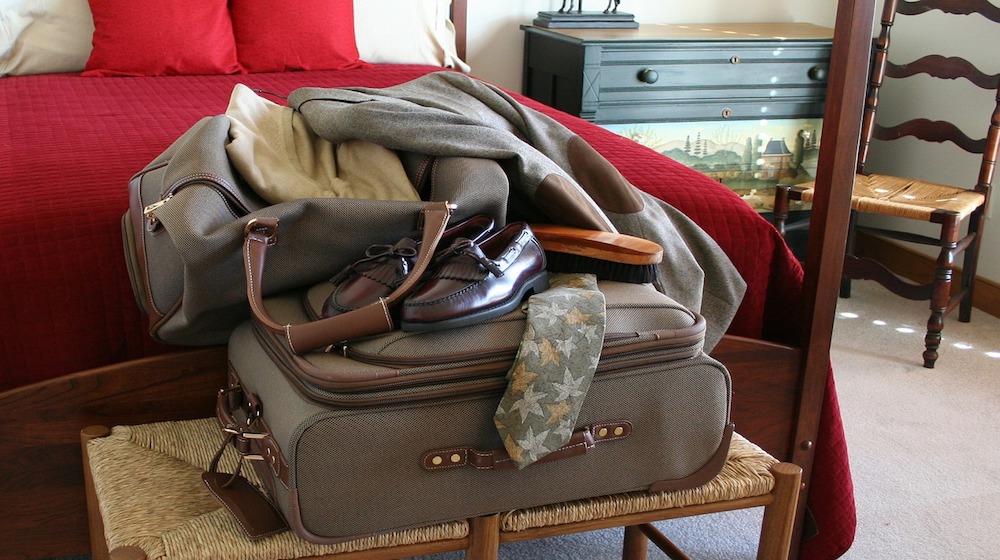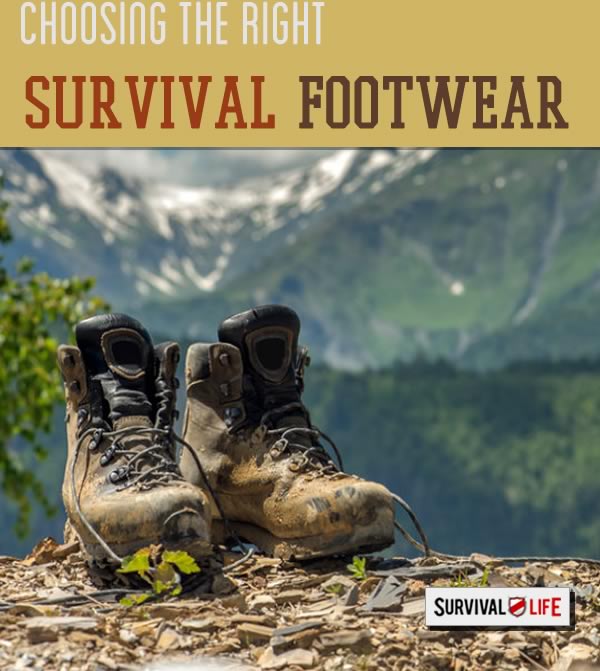Personal Safety
How to Survive Without Running Water

These 16 Tips Will Help You Survive When the Water Runs Out
Getting caught without running water — due to a freeze, busted pipe or some other unforeseen emergency — is no laughing matter. It can be devastating and, if it lasts long enough, deadly.
Gaye Levy from Backdoor Survival has some tips on how to cope when you don’t have running water.
Every prepper worth their salt stores water and lots of it. Not only that, they store one, two, three or more ways to purify water. That is all well and good because you never know when a disaster or other disruptive event may occur and those water resources will be called upon for drinking, cleaning, hygiene, and sanitation purposes.
Recently, my number came up and I was the one without water during a short term, personal water apocalypse. Now really, that may be a bit dramatic because I was simply without running water. This was caused by a break in the line from the water main at the street to my home. All told, I was without running water for 12 days.
To be honest, I was quite relaxed about the ordeal. After all, I had cases of bottled water for drinking, a 55 gallon water barrel holding purified water, a source of raw, unfiltered water from a gravity pump right outside my house, and of course, my Berkey, LifeStraw Family, SolarBag, and pool shock for water purification.
Get your own LifeStraw personal water filter here!
Still, being without running water brought up issues I had not considered. Albeit water-ready, the reality of not being able to turn on the tap and have fresh, and especially hot, water was a new experience.
Today I share tips for coping without running water so that you can be better prepared if something similar happens to you.
16 Tips for Coping Without Running Water
1. With advance notice of a water shutoff, fill the bathtub and as many spare jugs and buckets as you can round up. In addition, fill the Berkey, if you have one and all of your sinks.
2. Double up on hand sanitation. Fill a spray bottle with liquid castile soap, water, and a copious amount of tea tree or other anti-bacterial essential oil. To wash you hands, spray with a generous amount of your soap/tea tree mixture then rinse with water from a filled sink or a container of water set next to the sink. Follow-up with commercial hand sanitizer. See DIY Liquid Castile Soap.
3. Know the location of your preps! In my case, I had two camp showers that could have been used for taking hot showers after heating water on the stove. Could I find them? Nope.
4. No mater how many buckets you have, you need more. In addition, make sure the buckets you have are manageable, weight wise, when filled with water. Remember, water weighs 8.35 pounds per gallon. My buckets were re-purposed 2-pound buckets obtained for free from a local café and were small enough for me to handle comfortably when filled. A water filled 5 gallon bucket would have been a problem.
5. When using the toilet, flush liquids daily but solids upon each use. I had two toilets in use so it was easy to abide by this formula. I did not, however, flush TP (see below).
6. Dispose of toilet paper into a wastebasket and not into the toilet. This will prevent your toilet from backing up because it is crammed with paper! Been there, done that. Do, however, be mindful of the smell and dispose of the contents of your wastebasket daily. Baking soda helps control odors if you can not dispose of soiled TP often enough.
7. When it comes time to flush, fill the tank with water and use the handle on the toilet to flush. This uses less water than dumping water into the bowl.
8. Stock up on disposable plates, cups, and eating utensils. Cleaning up after meals will be a challenge and will use a lot of water. Save the water you have for cooking utensils and use disposables for everything else.
9. Clean with cloths and rags not sponges. Without proper cleaning, sponges will become very unsanitary quickly. Gross even. Use microfiber cloths or cleaning rags made from discarded tee shirts or towels. They can be washed using a Mobile Washer, tossed in the garbage, or laundered when things return to normal.
10. Learn to take “sponge baths” using a washcloth and soap. Your spray bottle of castile soap will come in handy for this. Better yet, lay in a supply of No-Rinse Bath Wipes (my favorite), homemade wipes (something I still need to learn to do), or baby wipes.
11. Have at least one way to filter and purify watered gathered from the outdoors. See How to Use Pool Shock to Purify Water.
12. Learn to hook a hose up to your water heater so that you can use its water in an emergency. It is a good idea to turn off the electrical breaker or turn off the pilot light first.
13. Plumbers may not always be available so learn minor plumbing repairs yourself. When the water came back on, one of our toilets failed, probably due to the backflow of gunk. Repairs were easy with a backup tank repair kit.
14. Get to know which neighbors have what home repair and handyman skills. Let them know about your own skill-set so that there is reciprocity and you can help each other out when something goes wrong and needs fixing. Everyone knows how to do something, right?
15. Keep basic tools on hand, including shovels, axes, saws, hatchets, and other manly-man items. Just because you are a woman does not mean you should not have basic tools!
16. Maintain a good sense of humor. Treat the experience and a learning experience as well as a grand adventure in self-reliance.
The Final Word
Regardless of how much you drill for disruptive events, having something happen for real will open your eyes to considerations that were unplanned. With camping, backpacking, and boating, you know in advance you will not have running water and can plan accordingly.
-

 Do It Yourself7 months ago
Do It Yourself7 months agoParacord Projects | 36 Cool Paracord Ideas For Your Paracord Survival Projects
-

 Do It Yourself9 months ago
Do It Yourself9 months agoHow To Make Paracord Survival Bracelets | DIY Survival Prepping
-

 Do It Yourself9 months ago
Do It Yourself9 months ago21 Home Remedies For Toothache Pain Relief
-

 Do It Yourself10 months ago
Do It Yourself10 months agoSurvival DIY: How To Melt Aluminum Cans For Casting
-

 Exports8 months ago
Exports8 months agoAre Switchblades Legal? Knife Laws By State








left coast chuck
December 26, 2014 at 1:07 PM
It’s hard not to sound sarcastic, so you should not take this as an insult, but if you have a 5-gallon bucket and you know you can’t handle it when it is full, you just don’t fill it all the way up. If the most weight you can handle is 2 gallons, that’s all you put into the 5-gallon bucket. Part of survival is using your brain.
A 5-gallon bucket is more useful than a 2-gallon bucket if you need it for more things than storing or moving water. While it may take up more cubic footage of storage, it doesn’t take up much more square footage of storage and because they nest, you can have a significant amount of empty storage in just about a square foot of storage space. Don’t acquire items that don’t nest.
For bathing, a sponge bath with witch hazel will make you feel refreshed. You can clean yourself with an ounce of witch hazel and a cloth. You don’t need to rinse as you do with a soap cleanser. It doesn’t dry your skin like an isopropanol sponge bath would, but then you can’t use it to start a fire. Eight ounces of witch hazel at WallWorld will cost less than the cheapest prepackaged towels and will not dry out like the towels will when the package is opened, no matter how carefully one seals it.
In cleaning your hands why would you wash them AND use hand sanitizer? A quarter teaspoon of hand sanitizer with 60% or higher ethanol will clean your hands as clean as they need to be. A quart of hand sanitizer used a quarter to a half teaspoon at a time will last a long time. It is important to use an adequate amount without using too much. In a survival situation careful measurement of quantities used each time becomes important in order to regulate usage and to determine how long your supply will last, otherwise you will find that you run out too soon.
left coast chuck
December 26, 2014 at 1:08 PM
That should be that a 5-gallon bucket doesn’t take up much more square footage, if any, than a 2-gallon bucket. My brain got ahead of my fingers.
Ed
December 27, 2014 at 5:32 PM
Good info. I see a few things I need to get. Shower bags for one.
Michael Adams
December 27, 2014 at 6:15 PM
One of the best ways for folks who are just starting to prep is to go camping. You will find out quickly what you need and can have a more rounded knowledge of the day to day items you will need to collect. We actually went 2 summers and 2 winters w/o central heat/air, just using fire place and propane heaters. Eye opener!!!
Cindy
December 27, 2014 at 6:22 PM
I spent several months with no running water when I moved out to my land after a fire. I am lucky enough to have a stream as my back border. It did get to be a bit much hauling water so I learned how to cycle my water. Any water that was not used for drinking got added to the “flush bucket” During the winter months I melted lots of snow (we do get lots of that here in Maine)on my wood stove. Not only did I get water for washing but I also humidified my rooms.
mobileHman
December 27, 2014 at 10:52 PM
Good tips Gaye…Thank you. Also good pointers by Left Coast.
Judith Hannan
December 28, 2014 at 3:08 AM
My husband and I ( in our 70’s!)
keep empty kitty litter pails w/lids
that stack up square. Fill with clean, fresh water using any smaller container.
They were cleaned w/soap & hot water
and rinsed with a mild bleach/water. This way, you have an increased supply
of fresh water because you “dip out” only what you need.
kurtof
December 28, 2014 at 6:04 PM
A bottle of 78% strength “rubbing” alcohol (AKA, isopropyl alcohol) should be part of every household. Use higher strength, e.g., 91%, for disinfecting surfaces. Methyl alcohol will also work but is more volatile, hence, feels colder. Use in lieu of bathing with water. Apply to a cloth and simply wipe the scum from your body. Personally, I am a “grease-ball,” and I can say with confidence it works wonderfully well. Note: DO NOT DRINK. This stuff is poison and can blind or kill the drinker.
Farmer
January 27, 2016 at 9:14 PM
Methanol is poisonous to the central nervous system and may cause blindness, coma, and death.
Verne Coberly
December 29, 2014 at 7:04 PM
I had a water heater failure this week due to a broken waterline. Hint: If using water source from the bottom of the heater with a hose connection, you must lift the lever on the pressure relief valve on top of tank to get water to run. Also keep some stock of twist type water pipe repair connectors. Easy repair.
Pingback: 5 Reasons to Get a Berkey Water Filter | SL
Pingback: 3 Ways to Purify Water | Survival Life
Pingback: How To Purify Water - Survival Water Purification | Survival Life
Pingback: How To Purify Water | 5 Water Decontamination Techniques
Pingback: How Does Chemical Water Purification Work | Survival Life
Pingback: How to Make Water Drinkable | Survival Life Self-Sufficiency Skills
Pingback: How To Make Water Drinkable - Survival Patch
Pingback: How To Make Water Drinkable - Survive!
Pingback: Survival Skills Everyone Should Know And Be Able To Do | survivalisthandbook.com
Pingback: Survival Skills Everyone Should Know And Be Able To Do
Pingback: How To Purify Water | 5 Water Decontamination Techniques - Survive!
Pingback: How To Purify Water | 5 Water Decontamination Techniques - Survival Patch
Pingback: How To Purify Water | 5 Water Decontamination Techniques
Pingback: How To Purify Water | 5 Water Decontamination Techniques – Ultimate Survival Alerts
Pingback: Ways To Get Clean Drinking Water In An Emergency - Firearm Pebbles